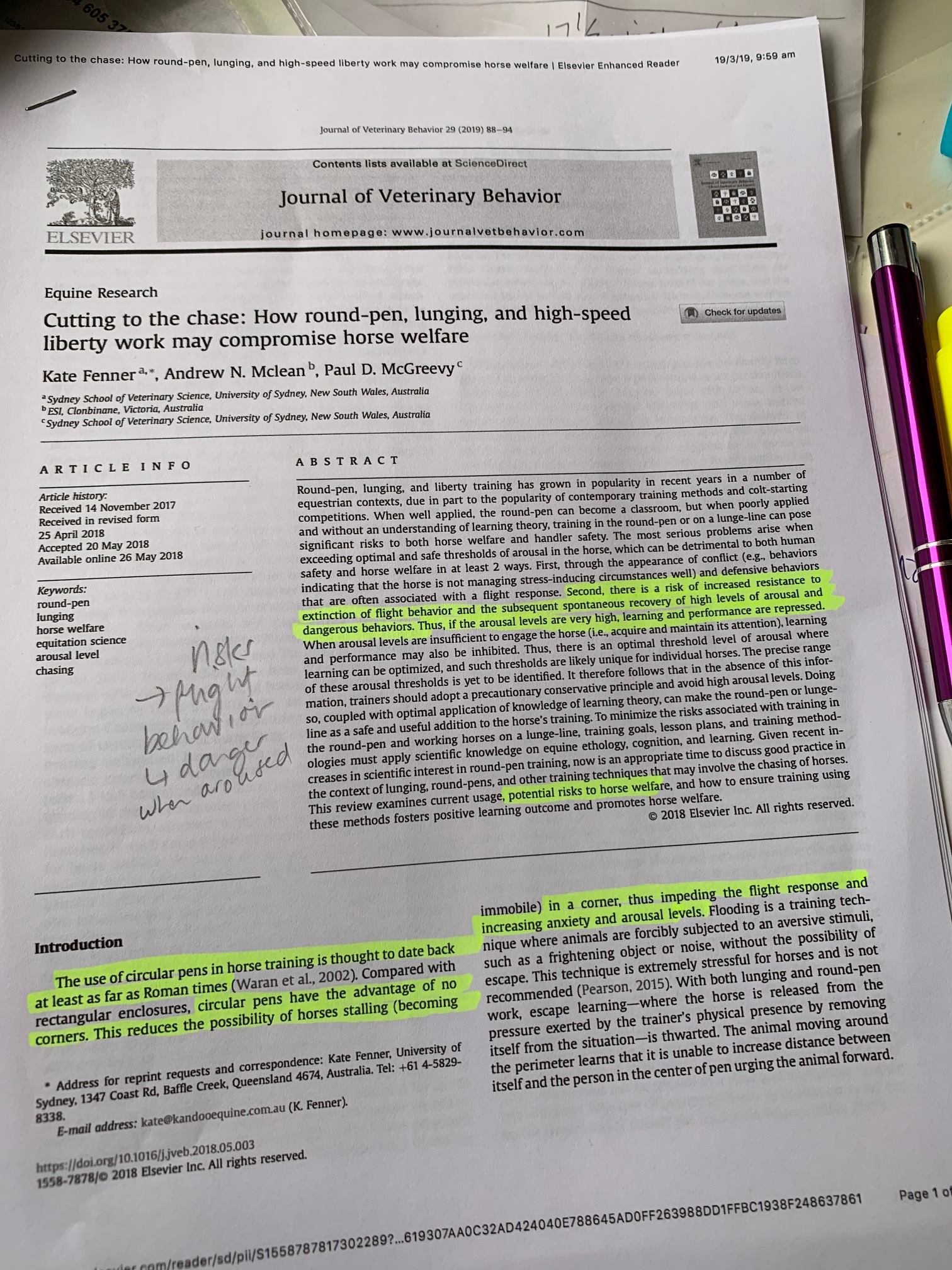Equine science article highlight: Cutting to the Chase: How round-pen, lunging and high-speed liberty work may compromise horse welfare
By Kate Fenner, Andrew McLean and Paul McGreevy,
Journal of Veterinary Behaviour, 2018
As announced last week, here's the first in this series of equine science article highlights and its application to horse facility design:
The article examines round-pens, that small but significant piece of infrastructure supporting many of our horse handling, training and exercising routines. Common practices including the benefits and welfare risks are discussed and it offers good food for thought in terms of facility design. The take-away message for us at Equitecture Horse Facility Design is to be very mindful of the relationship between the activities, horse size, experience and temperament to the yard’s specifics such as its diameter (width) and wall heights. Strain on the horse’s musculoskeletal system can be a possibility where diameters are inappropriate, i.e. too small. The 18-20m diameter is “anecdotally reported to be sufficient to protect the horse from musculoskeletal damage.” Importantly, the article also notes that there is “no empirical evidence to confirm the safety of working horses in pens of this size”. So we still need to be vigilante that the tightness of the circle is suitable for the horse size, the specific activity and its duration.
A minimum wall height of 2m is suggested to deter [average sized assumed here] horse’s attempting to jump it when they are in a heightened state. (I have personally witnessed this ‘escape attempt’ and it was catastrophic. I can recall the rough sawn timber walls injuring the horse’s front legs and chest, skinning it tremendously – let alone the after-effects of the negative ‘training’ experience on the horse. So in addition to a higher wall, the use of rubber (lined) walls or smooth worked timber could have been a better option in this scenario).
The article also presents an argument for lower walls where the trainer is experienced and the horse selected carefully. The thinking behind this is that it can encourage trainers to be always mindful of the level of pressure they impose on the horse. It gets difficult though when the yard could be used by a range of people and horses. Possibly the approach would be better to be safe than sorry and go with the maximum height. However, the issue this height may raise is the visual screen it provides from the surrounds. Horses are unable to see the source of noises and activities about them which could raise anxiety and there lies an argument for railed round pens.
As designers, we would generally favour rubber lined walls to the max height to optimise the safest outcome but the design of the built environment is generally a compromise. Maybe a mesh type wall panel with solid skirt running along the bottom could offer this, provided the mesh is suitable strong and say 50 x 50 square to ensure most hooves can't get caught. This would need to be reconsidered for miniature pony with their petite hooves!
Horses can be volatile at speed and when under pressure so the yard design needs to minimise injuries.
Every construction element needs to have smooth, rounded edges, tight connections and be of a material strength suitable for the forces of a horse. Unfortunately, this is not always the case and even new round yards can be of inferior/unsuitable construction. For instance, take care with mesh panels that the hundreds of edges along the vertical rods are filed smooth and sit either ‘flat’ against the construction or either recessed so the horse cannot puncture itself.
As for the round yard’s footing, the article states that it needs to be of sufficient base and surface to support the movement and action of the horse.
We would extend on this aspect further in that the footing needs to be sufficiently drained and seasonally stable in all weather conditions where yards are uncovered. For example, when surface materials are imported from countries with different climates, particular cooler, wetter weather, then there is a huge amount of watering required to keep the surface in prime condition - and it can be very frustrating having expensive surface fibre blow away in the wind! Speaking about ventilation, this does need to be provided where the round yard is fully enclosed, particular if it’s uninsulated construction. Airflow and thermal control is paramount to the welfare of the horse at all times and more will be discussed on this topic in subsequent article highlights.
The article concludes with recommendations to develop and recommend best practice round pen techniques. Equitecture would include guidelines on the design of the structure itself, given the round yard’s prevalence and everyday use by so many of us. This would include specific research on the relationship of the horse’s welfare due to its movement on the continual arc of a certain radius, etc.
So although these pens are a small ‘piece’ of the horse property, the design and construction of the round yard is an important consideration. The article raises some good points to consider for facility design and its role to play in horse welfare.



